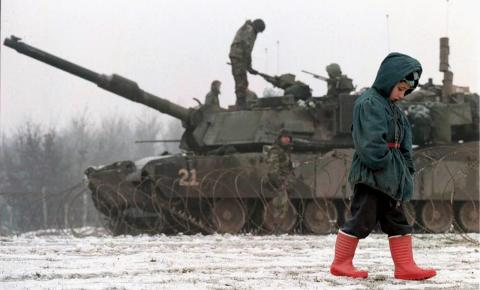The attempted assassination of Sergei and Yulia Skripal in early March saw a global response sterner than many expected. More than 150 Russian diplomats were expelled from embassies worldwide.
Yet despite global condemnation, the assassinations appear to have continued. Russian investigative journalist Maksim Borodin recently died after falling out the window of his apartment in Yekaterinburg. His colleagues say it was highly unlikely to be suicide.
Russia has a well-documented recent history of high-profile assassinations. In 2006, journalist Anna Politkovskaya was gunned down in an elevator. The same year, former intelligence officer Alexander Litvinenko was fatally poisoned by a radionuclide. In 2015, opposition politician Boris Nemtsov was shot dead in sight of the Kremlin.
In the Skripals’ case, some deny that the Russian Government was responsible. Others have suggested the Skripals were targeted by a “bungling” group of rogue Russian agents, or by a counter-intelligence operation imbued with a “sacred” duty to exact revenge.
Yet the choices of targets and methods suggest that the use of assassination as a tool is a symptom of how Russia’s elite views power.
First, consider the targets. Skripal and Litvinenko were both defectors from the intelligence organisation once headed by Vladimir Putin, the Federal Security Service (FSB). Nemstov was an outspoken opposition leader. Politkovskaya and Borodin had both published articles which damaged the Kremlin’s narrative: just before his death, Borodin had reported on the deaths of Russian mercenaries in Syria, whose presence had been denied by Moscow. All had publicly challenged or betrayed people or organisations in Russia’s political-security apparatus.
Second, consider the methods. Throwing a journalist out a window is hardly subtle, and neither is spreading a military-grade nerve agent around rural England.
But Moscow is not “bungling” – these tactics are chosen because they make the news. Using a nerve agent that directly implicates the Russian state sends a message to other double agents. This may be why Russia’s explanations are so implausible (one somehow suggested the Skripals’ pet guinea pigs were involved); they are token excuses for a clear and unmissable signal.
Powerful actors within Russia use assassination as a tactic not only because it removes opponents, but also sends a public signal of strength to those thinking about challenging the status quo. Extraterritorial assassination attempts using radioactive or chemical weapons send an even louder signal and imply that they were sanctioned by the uppermost levels of the Kremlin. They broadcast the same signal of strength as assassinations on Russian territory that don’t make international headlines.
So what does this say of how power is arranged and contested among the Russian elite?
The need to signal strength suggests a fear of being seen as weak. This fear is symptomatic of power struggles occurring within patron–client systems, a concept borrowed from anthropology by Henry Hale and Kimberly Marten to describe power dynamics in post-Soviet states.
In patron–client hierarchies, leaders promote and protect their clients to secure a debt of personal loyalty. Networks are reinforced through emotional and familial ties.
Putin’s inner circle, for example, is composed of men he knows from childhood and through the FSB and its predecessor, the KGB. These threads of personal loyalty extend downwards through innumerable networks, weaving a complex web that allows the Kremlin to exercise power through shadowy groups ranging from business elites to mercenaries and armed motorcycle gangs.
There are two characteristics of patron–client systems that help to explain why Russia conducts brazen assassinations. First, leaders in these systems must constantly signal their strength to retain clients’ loyalty and ward off challengers (a key reason why Putin is often photographed tranquilising tigers or riding motorcycles). Second, a weak patron can be overthrown, but only through collective action: clients must first agree on a new patron, gather enough support, and agree on a time to switch their loyalty, all while keeping their own clients in check.
Patrons, on the other hand, only need to disrupt the process – potentially through a brutal public assassination – in order to retain their grip on power.
Russia is not wholly governed by patron–client politics, nor is this the sole explanation for the assassinations. Patron–client dynamics do, however, help explain why the assassinations continue despite international condemnation, and why simply expelling Russian diplomats is unlikely to have much impact.
The death of the journalist Borodin is also a reminder that we should not differentiate our reaction according to whether the assassinations occur inside or outside Russia. The Skripals and Borodin are victims of the same systemic violence, and tragically are unlikely to be the last.

